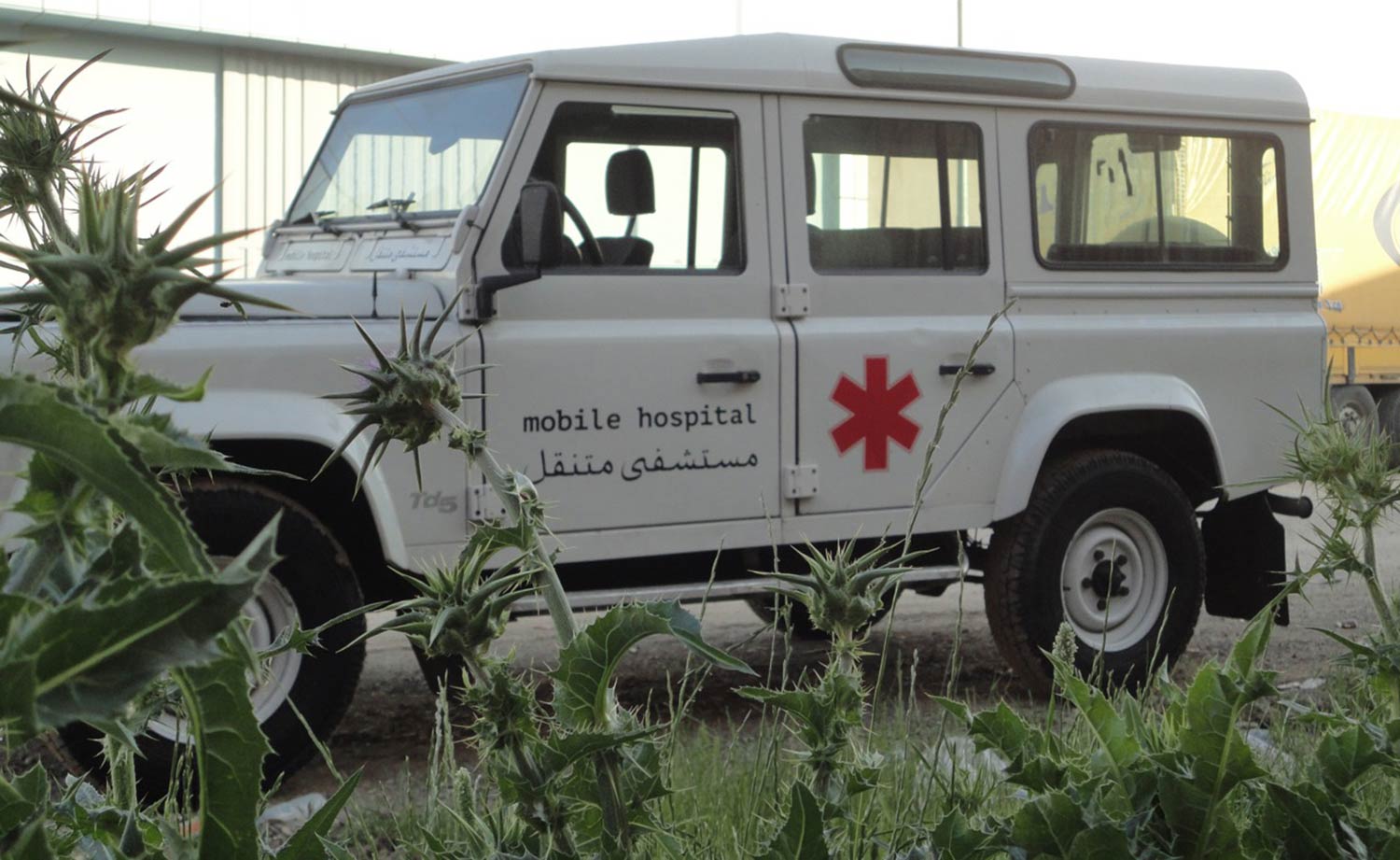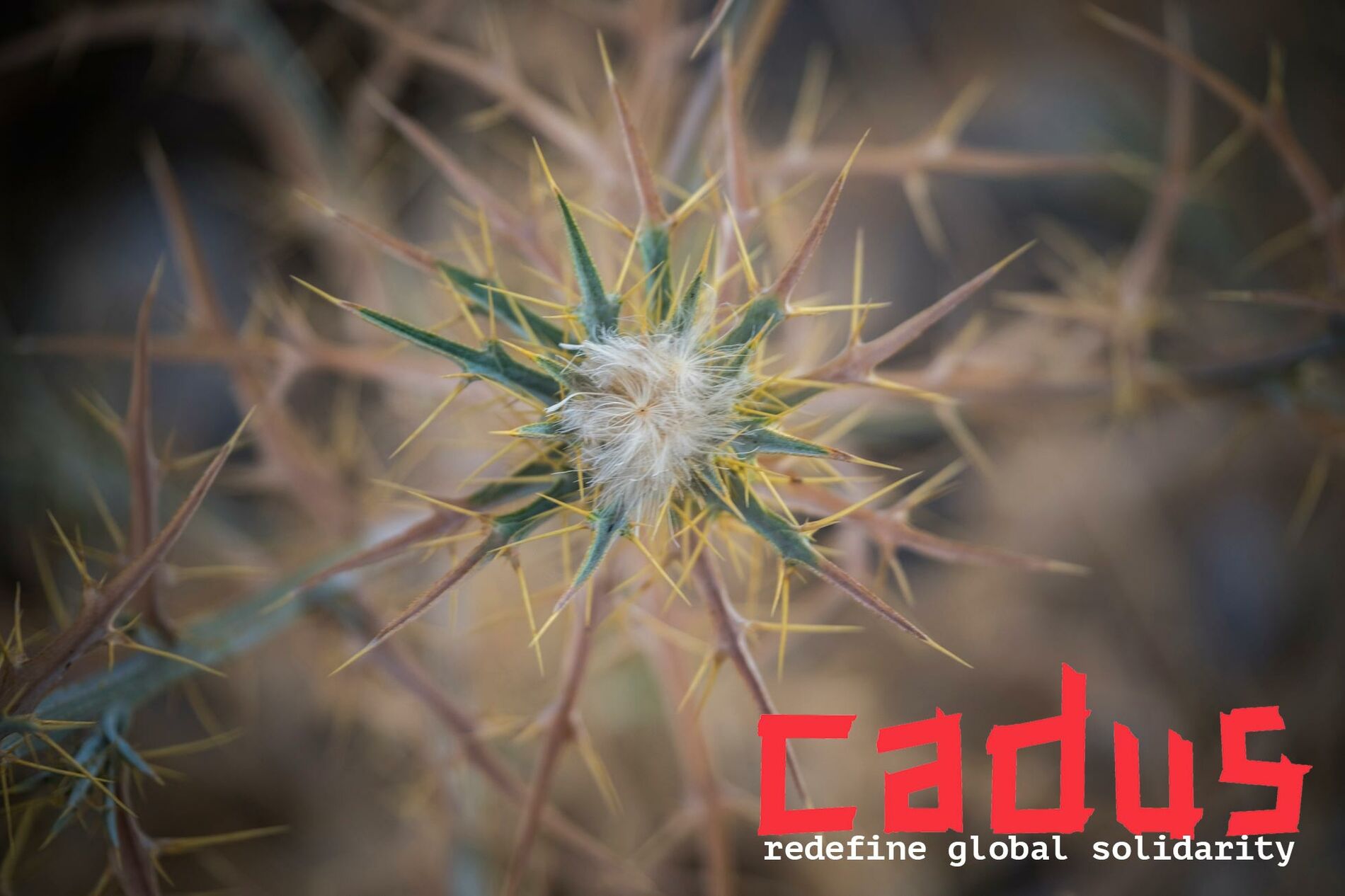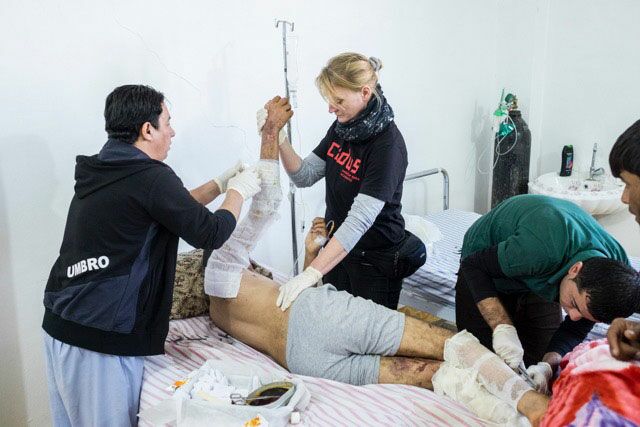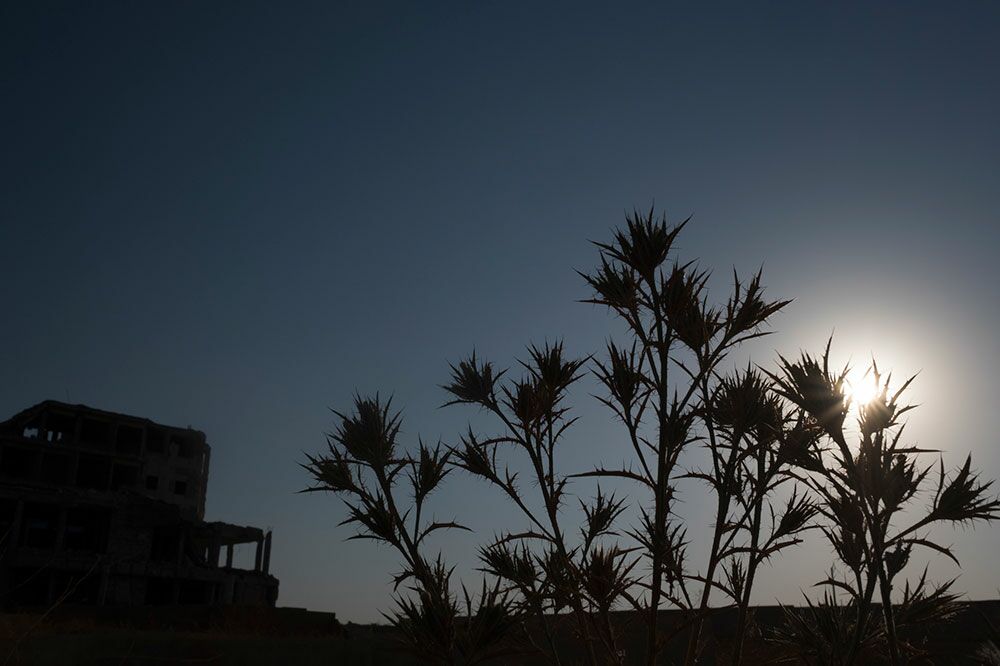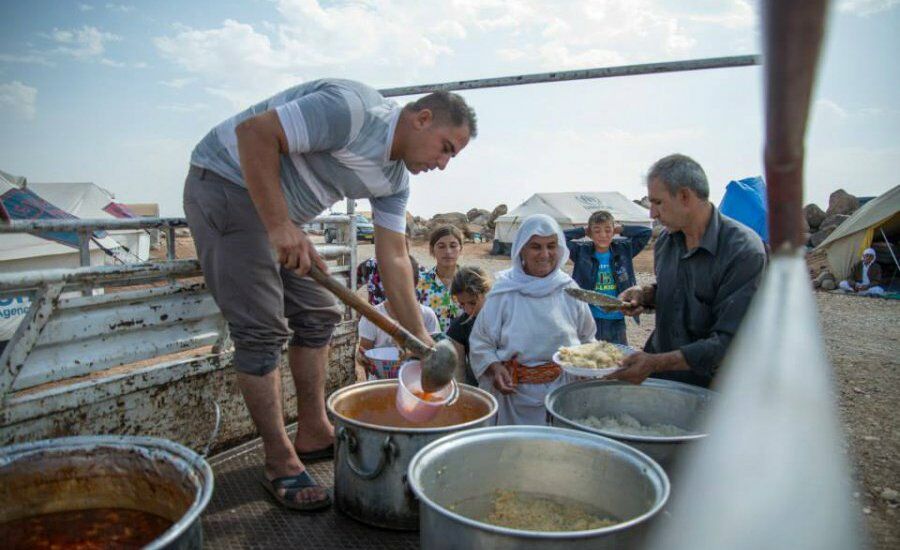
the-medical-care-situation-in-rojava-feature-cadus_projekt_rojava-2015_02-9d396d2a
The medical care situation in Rojava
On the one hand, there are general health care institutions that are run by the Syrian government. They finance two central hospitals, one in Quamishlo and one in Derik. But the financial support only covers the salary of the doctors working at the hospitals. In Derik (Al-Maliki), the last delivery of medicine has taken place one year ago.
Since the movement for a democratic society (Tevgera Civaka Demokratik, TEV-DEM) started in 2012, the much bigger part of medical care is carried out by the local autonomous authority and the humanitarian aid organization Heyva Sor a Kurd (Kurdish Red Crescent) and associated doctors. They aim at providing free or very low cost medical care. Currently about 100 doctors are taking care of the population of 2,5 million people in the three cantons of Rojava. Heyva Sor a Kurd consists of 190 volunteers who are working exclusively unsalaried. In close cooperation with the autonomous authority they take over major tasks of health care for the general public and also for the people’s protection units (YPG/YPJ). Hardly any of them has completed professional medical training.
The region is subjected to a civil war since four years now and suffers from an ongoing embargo which poses difficulties that can hardly be solved by the grassroots-democratic health system. Not only do they provide basic general health care for the public, the attacks of the IS leave them with innumerous injured people. According to the minister of economic affairs of the autonomous authority, 80% of the local budget is allocated to military spending and 20% to civil spending. It is safe to assume that the spending for health care follows the same pattern, as well as the allocation of personnel.
Medicine is either not available at all or is highly overpriced and has to be smuggled into the region. There is a lack of qualified personnel and medical equipment. Many doctors have been murdered systematically. As a consequence, most doctors have left the country over the past few years. From originally 700 doctors in Rojavas three cantons, only about 100 are left. Many of the different medical disciplines are not represented anymore in the region. There are for example no more neurologists or neurosurgeons who are urgently needed for treating the many patients who have been paralyzed by bullet wounds. Furthermore missing are orthopedic surgeons, orthopedic specialists and cardio surgeons. Surgery is without exception carried out by general surgeons who have to accomplish extraordinary tasks in this situation.
In order to be able to provide the hospitals with medicine and other material, the local health care structures are dependent on donations from other countries. At the moment part of the medicine is bought overpriced at local pharmacies. But what can’t be obtained there is completely not available unless a humanitarian aid transport manages to cross the Turkish or Iraqi border without being sacked. Many things are urgently needed and not available. The long list encompasses crystalloid solutions for infusion and specialized medicine like intravenous antibiotics and analgetics. There is no blood bank in the entire region of Rojava. The fridges of the hospitals are empty. In the case of casualties during fighting, the population is asked through loudspeaker and radio announcements to donate blood for immediate use.
There is a similar situation concerning the technical equipment of the hospitals. The larger part of the medical equipment has been either sacked or destroyed during the years of civil war. Since there are hardly any technical experts around anymore, the still existent equipment can’t be maintained or repaired. Much equipment that is necessary for standard diagnostics is not available. There is no Doppler echocardiograph, no CT or MRT diagnostics. Laboratory diagnostics is reduced to a minimum. The hospital in Qamishlo is the only one that can provide two beds for intensive care monitoring. And even there it is not possible to provide artificial respiration. In theory, there are three respiratory machines, but none of them work. And even if they did, there are no experts that could conduct a variable ventilation therapy.
From originally 50 ambulances at the moment only about 30 are fit for service – and the number is decreasing steadily. Ambulances are often destroyed by bombardment or fail because of technological problems that can’t be fixed due to lack of experts. Again, the people are dependent on donations from abroad. Most of the ambulances don’t even have equipment that lasts more than a few days. It is not possible to monitor patients properly or give them oxygen on the way to the hospital. We have been told that the reason for that is the common practice of the Turkish security forces to confiscate the equipment of ambulances that have been donated and cross the border to Rojava from Turkey. Furthermore, the ambulances are not made for off-road service as is necessary in northern Syria. Where there are no ambulances available, usually the transport to the hospitals is done with minibuses. Currently, Heyva Sor a Kurd is waiting since more than a week for an ambulance to be allowed to cross the Turkish-Syrian border at Qamishlo.
In facilities where post-surgery rehabilitation of people wounded in combat takes place there is only very limited physiotherapeutic treatment possible. Since water in Rojava is more expensive than petrol, the swimming pools are empty and simple rehabilitation training is not possible. The facilities therefore cannot serve as proper rehabilitation facilities but are mere safe places for the wounded to recover a little. Because the central health care facilities are repeatedly the target of military attacks, the main part of medical care takes place in an improvised environment. The hospital in Serekaniye has been destroyed for its larger part in an air raid carried out by government troops two years ago. The rest fell victim to a mortar attack. The upper levels served as a hide for the jihadist Nusra front until Serekaniye was finally liberated by YPG/YPJ units in July 2013. A low building behind the actual hospital – a former dental clinic – accommodates today the complete medical care for the 70000 inhabitants of the region Serekaniye. Although over the last four years two thirds of the Serekaniye’s inhabitants fled, about as many new people who left the surrounding villages to flee from the IS settled in the town. The low building that only just has been put back into service offers an operating room, delivery room, a rudimentary equipped emergency room, radiology, x-ray and a laboratory. The radiology is operated by a young man who worked in emergency medical services for seven years prior to the civil war. He taught himself how to use the apparatus and develops the recordings by himself in a small laboratory. He is the only one who is able to use the equipment. The apparatus itself can only be used to x-ray the limbs, there is none that can be used for the thorax and spine. In a total, 6 doctors and about 20 nurses work in the hospital around the clock. Up until one month ago the hospital was still accommodated in a disused phosphor factory. Moving to the former dental clinic was a big step forward.
In the other towns of Cizires there is a similar situation. The civil health care is supported through policlinics that are administrated by TEV-DEM. Ten of them can be found in Qamishlo, and two each in Serekaniye and Derik. In Amunde a hospital just has been bought of a private owner and should be available to the public soon. Up until now in Amunde the local authority cannot provide a hospital. In emergencies the patients have to be transported to the closest hospital in Qamishlo. In Al-Hasekeh the regime is still present in half of the town and operates a health center where also vaccinations can be carried out. But they are not for free and vaccination sera are rare.
A little outside of the town lies the refugee camp Newroz that attained a sad fame through the mass influx of Yezidi refugees from the Sinjar Mountains in the beginning of August. The camp is also run by the local authority and medical care is provided by Heyva Sor a Kurd. At the moment 6000 people live in 800 tents in the camp. Heyva Sor have one tent that has aides working around the clock. In daytime there is one doctor and two assistants working there, the latter carrying out care and administrative tasks.
In the first days after the attacks of the IS against the Yezides in Sindschar the number of the refugees in the camp rose to 100000. At that time the aides were confronted with about 350 acute cases per day. Most of the patients suffered from dehydration and malnutrition after being in the mountains without water and food for days. But also snake- and scorpion bites appeared on a regular basis. By now most of the refugees have moved on to Turkey or the area of the Kurdistan Regional Governments (KRG) in northern Iraq. But some of them also went back to find their relatives in Sindschar. It is not clear how many people are in that area. It is estimated that there are about 1500 families. Until a week ago there were regular supportive missions to the region carried out by volunteers of Heyva Sor. They brought 200 tents and 29 truckloads worth of food into the area. This has partly been accomplished with the use of mules. They did also provide makeshift consultations. But at the moment there are no more runs to the mountains. The IS is again attacking the mountain region and last week the truck of Heyva Sor nearly fell victim to a mortar attack.
At the moment, on an average busy day, about 90 patients come into the tent of Heyva Sor, most of them to receive medication for a chronic disease. In the spirit of health care based on solidarity, the medicine is given out for free. Among the diseases that appear are chronic ones like hypertension, heart- and renal failure and diabetes. Medicine to treat chronic diseases are rare. Drugs against hypertension are currently scarce and can only be given out for a week. Heyva Sor hopes that more donated medicine will reach the camp. Another problem are infectious diseases, especially children’s diseases. There is an increase in the cases of Scabies and the scarce supply of Benzylbenzoat is coming to an end. In theory it would be possible to wash the laundry on 60°C, but there are no appropriate facilities in the camp.
Our conclusion is an ambivalent one. On the one hand it is distressing to witness this huge humanitarian crisis that was brought about by the war against the movement for a democratic society and the embargo against the local authority. On the other hand one has to give much credit and respect to the ones running the health care system based on solidarity in Rojava. In adverse conditions they make the near impossible possible. While the cantons of Rojava have already been structurally depleted of necessary supplies during the Assad-regime and medical care was only available to the wealthier, regime-affirmative parts of the population, today free medical care that is based on solidarity is successively being established and provides care independent of the patient’s origin, religion, gender or income. It is a system that we should support.
Published
Author: by Jan Kout
By CADUS-PR
Stay informed about our missions, events and humanitarian emergency aid topics – with our newsletter!
Newsletter registration
I want to unsubscribe from the newsletter.
